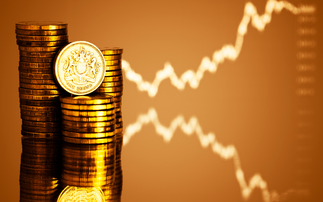Michael Erard is an author, journalist and linguist who for five years worked as a metaphor designer at the FrameWorks Institute, a Washington, DC think-tank. On one occasion, he needed to create an image for a city department in charge of multiple health programmes, many aimed at supporting vulnerable demographics.
"The right metaphor must speak to inclusion and community, and suggest some benefit, such as health or opportunity, that's more widely shared. I tried ‘bridge' and ‘platform', but ultimately went with ‘key ring': the department holds the keys for unlocking health," he explained in a 2015 essay.
For a long time, investors assumed they had to choose between environmental, social and governance (ESG) considerations and performance, as if opening one door shut the other. In fact, just like the health programmes Erard wrote about, performance and ESG can be viewed as a set of keys hung on the same key ring, both helping to unlock value.
As the body of supporting evidence has grown, investors have begun to review their assumptions. "The market is starting to view ESG performance as positively correlated with financial performance, and to think about ESG as an enhancer of investment returns rather than something requiring a trade-off," says Richard Butters, ESG analyst at Aviva Investors.
ESG ratings: Infuriatingly inconsistent
However, not all ESG metrics are created equal. Some are top-level summary ratings, such as those provided by MSCI or Sustainalytics, while others are topic specific. For instance, much of the information in the reports published by CDP focuses on companies' environmental and greenhouse gas emissions programmes.
Muddying the waters further, each ratings provider uses a different methodology, which results in a low correlation between ratings that supposedly measure the same
"To give an example, some of the major European banks are among the ESG leaders for Sustainalytics but rank as average by MSCI. Different agencies look at different metrics or apply different weights to subjects they think are material for the sector and for specific companies," says Demi Angelaki, global liquidity portfolio manager at Aviva Investors.
ESG ratings have a role to play, but investors must choose the right measures and remember the limitations of existing scores.
Data quality has a long way to go
Compared to traditional financial reporting, the level of ESG disclosure is not as deep, nor is it consistent between companies within a peer group.
"If you were to build a table with all the ESG metrics you want to track for a particular industry, and you linked that to the most recent financial statement period, in some cases only 20 to 30 per cent of those metrics would populate - regional differences also emerge due to local reporting requirements," explains Butters.
However, the quality and availability of data are at least improving, either thanks to regulation or simply due to improved awareness about the issue. Butters says that, where sustainability reports used to be a marketing exercise with precious little detail, companies now include metrics, targets, clear descriptions of progress and KPIs.
Where ESG reporting has further to go is on developing a baseline sustainability accounting standard, not only for asset owners and asset managers, but also companies themselves. If the latter do not disclose ESG data, asset owners will not be able to accurately report on the ESG profile of their holdings. Encouragingly, many of the ESG reporting standards are beginning to converge, which should provide greater clarity for reporting companies and their investors.
"It is very much down to what companies are willing to disclose, and there are regional discrepancies. If everyone disclosed to European standards, we would be in great shape," says Alessandro Rovelli, senior credit research analyst at Aviva Investors.
Nevertheless, ESG ratings are helpful as a baseline when analysing a new company's sustainability credentials, for credit research, and to allow comparisons between products in client reporting.









